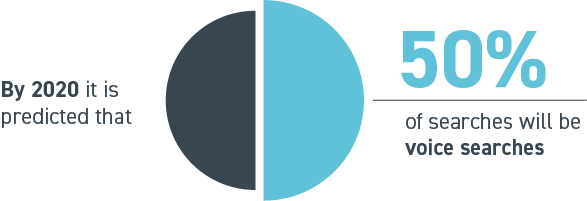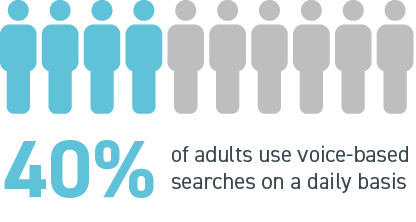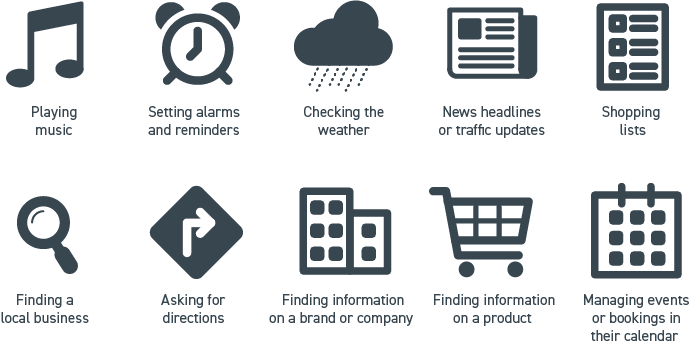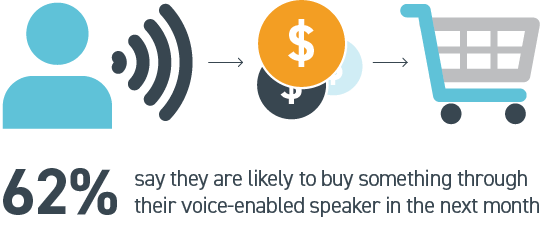Voice Search Trends: You Need To Stop Talking And Start Listening
In 1952, the first speech recognition system, “Audrey” was designed with the ability to recognise digits. Ten years later, IBM demonstrated its “Shoebox” machine at the 1962 World Fair. It could understand 16 words spoken in English. Fast forward to more than 50 years later, where Amazon, Google, Apple & Microsoft have made voice search and virtual assistants a part of our daily life.
Voice search is changing the way we behave and interact with technology. “We are accelerating into entering the next age of human/computer interactivity — moving from visual to audio interactions,” says Jonathan Restarick of Accenture Communications, Australia and New Zealand.
Whether people are solving problems or learning about the world around them, they want the most relevant and personal results in real time. By 2020, it is predicted that 50% of searches will be voice searches, leaving tech giants to compete to provide the most instant, accurate and personalised voice assistants.
How Many People Use Voice Search?
The proliferation of voice search over the last few years has seen 40 percent of adults use voice-based search on a daily basis. A Mindshare report estimates that 600 million people use voice-activated personal assistants at least once a week globally, whether that is through Echo and Google Home devices or on mobile devices. Three quarters of voice search revenue come from North America.
Where and When Do They Use Voice Search?
People mostly use voice search while they are driving and performing tasks that require hands-free assistance or minimal disruption. This includes activities like cooking dinner; working or watching tv; showering or using the bathroom; or exercising or walking.
At home, voice speakers most often sit in common rooms such as the kitchen or living room. Whilst most searches are done when users are at home or work alone, recent studies have also shown that people are becoming increasingly more comfortable with conducting voice searches in public, most commonly on transport or in restaurants.
What Are They Using Voice Assistants for?
72% of people who own a voice-activated speaker say they often use them as a part of their daily routine to make it easier and faster. Talking to their digital assistant helps them to get tasks done quickly and efficiently and allows them to multitask on higher value priorities.
The most common queries include:
- Playing music
- Setting alarms and reminders
- Asking for weather forecasts
- Checking news headlines or traffic updates
- Creating shopping lists
- Finding a local business
- Asking for directions
- Finding information on a brand or company
- Finding information on a product
- Managing events or bookings in their calendar
Users are also finding that being able to search or perform tasks by voice doesn’t pull them out of the moment. This allows them to move away from screens and stay engaged with their surroundings, whether they are at work or at home with friends and family.
Shopping with Voice
As customers expect more convenience from brands, local businesses are able to develop new voice-based customer experiences, services and initiatives. Users are increasingly experimenting with shopping via their voice assistance, with Google reporting that 52% of people using voice search when researching products and 62% say they are likely to buy something through their voice-enabled speaker in the next month.
When asked how users would use voice search to research and buy products, 60% say they would use it to search for the best price, followed by searching for local products and services or searching for a specific brand.
Personalisation
Increasing expectations of consumers call for businesses to create more meaningful dialogue with their customers and a unique and tailored user experience. Voice search is disrupting current search conventions by providing more opportunities for such personalisation. Almost 70% of requests to the Google Assistant are expressed in natural language, not the typical keywords people type in search engines on the web.
Searches with keywords “Near me” grew more than 130% year on year. More and more consumers are using words like ‘I’ and ‘me’ for a more personalised experience, such as “What running shoes are best for me?”, “Can you find local restaurants near me? These more complex queries mean SEO will shift to long tail keywords and phrases. This way websites will be setup to answer full questions instead of focusing on single keywords.
Voice is no longer a thing of the future. It is here now and users are adopting it faster than ever. As cost decreases and functionality increases, customers will increasingly turn to voice search for more accurate and more personalised information. Businesses need to be prepared to invest in a voice strategy to define their presence in a voice operated environment.
To learn more about how your business can utilise voice technology, contact us today.






